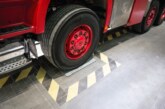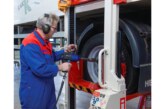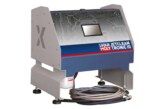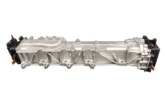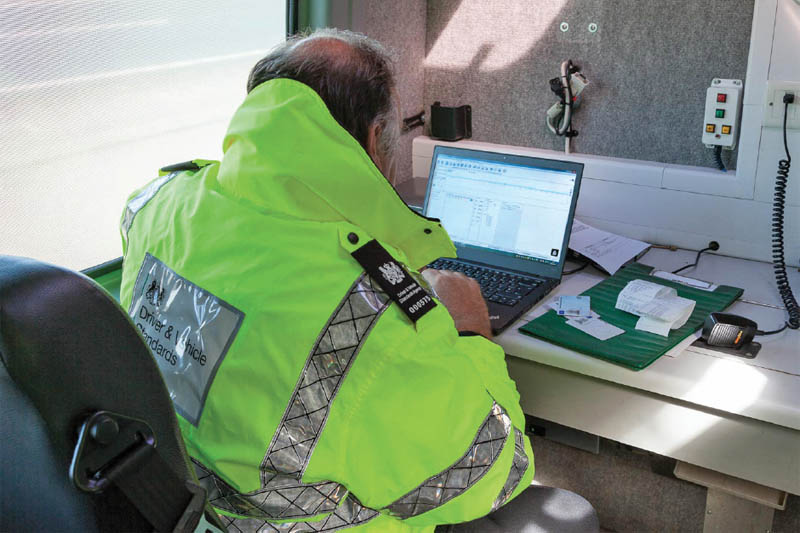
Your maintenance system needs to include a full maintenance schedule to meet operator licensing rules. This should cover everything from day-to-day checks through to planned checks, as DVSA explains in this best practice guide.
DVSA doesn’t ‘approve’ any software systems or hardware devices. It’s ultimately the operator’s responsibility to make sure that the maintenance system used meets the requirements of their operator licence. However, it is able to provide some best practice advice. The right digital solution can add benefits to any maintenance system by providing ease of access to all relevant data in one place, including:
- Safety inspections
- Unplanned maintenance
- Inspection reports
Being able to link directly to related data – such as technical information – means that it can be obtained quickly. It also provides the ability for workshops to create maintenance schedules which are both planned and retrospective. Systems can be linked to those run by maintenance providers, giving shared data on:
- Maintenance history
- Scheduled repairs
- Invoicing
The automated processes that can be created, helps to organise and manage an efficient and well-planned system.
What does the system need to do?
It’s ultimately the roadworthiness of the vehicles operated that will demonstrate if the system is well-designed and meets the required standards. Operators as well as drivers are responsible for the condition of their vehicles. Operators need to satisfy themselves that any systems or devices used don’t undermine the running of a safe and efficient fleet. Important features of a computerised system include:
- The availability of hard copies of records to be produced on request
- It must be tamper proof (eg. records can’t be changed at a later date)
- It must be clear what’s been checked and by whom
- There must be a clear end-to-end audit trail
Secure your system
To make certain that your system is secure, you should consider:
- Digital authentication – eg. a log-in or PIN
- Date and time stamping
- An audit trail on both the part of the maintenance provider and the operator
Whilst enforcement action for noncompliance rests with the operator, it’s their responsibility to make sure that the system provider can guarantee the reliability of the data.
Keeping old data
Where vehicles or trailers change ownership, the records relating to these – even in digital format – must still be available to the original operator.
Managing the system
Regular administration and backup of electronic data should be undertaken. It’s ultimately the responsibility of the operator to make sure the safekeeping of such data, along with an effective management process. Easy access to the data – for management and enforcement purposes – must also be available. Data security and integrity must exist with any system used – this may include some form of clear audit trail.
Daily walk around checks
The daily walk around check can be done using a handheld device, and the results stored digitally. These can include devices like tablets or smartphones which can be given to the driver or allocated to the vehicle. The system must provide:
- A suitable method of digital signature
- Secure data input and storage
Forms can also be completed by hand and then scanned, and saved digitally.
It should always be possible to produce a minimum of the current day’s record at the roadside. Systems must include effective date and time stamping to make sure data is reliable, including NIL defect reporting where it’s included. DVSA states that nothing in this guide prevents the operator from using systems with additional functions.
Recording defects at roadside
The same systems can record defects which happen whilst a vehicle is in use. This can be an extension of the same process, with the ability for the driver to ‘add’ a record for that day including information about the action taken. Such systems should reflect the requirements as shown above. In all cases there must be confirmation that the vehicle is safe to use.
Creating a safety inspection programme
Planning safety inspections
Safety inspections must be planned in advance. Vehicles that are subject to a statutory annual test can plan their year’s programme – such as cleaning and major servicing – to avoid duplication of work associated with the test. A simple method of drawing up a programme is to use a year-round planner or flowchart. Digital systems are equally fine, and electronic record management and storage systems will often include a planning feature.
DVSA advises that you must follow the rules set out in its Guide to Maintaining Roadworthiness when using a digital system. Such systems must:
- Be capable of providing records in ‘real time’ to the operator
- Include an audit process that shows date and time stamping
Regular safety inspections
You can collect and store safety inspection information using an electronic device. The records must show a clear audit trail from inspection to sign-off after repair (if one is needed). It’s very important that it includes a declaration that the vehicle is fit for service or not. A separate record must be completed for each safety inspection of a vehicle or trailer. Where the record of the safety inspection is to be stored digitally, then the checklist used for the inspection doesn’t need to be kept. You can use an electronic device (eg. a tablet) in place of a checklist.
Capturing and storing safety inspection data electronically
Bar coding or scanning of defects found or work done is fine providing that a means of interpreting each code is available. Safety inspection records stored digitally must be:
- Tamper-proof
- Capable of producing hard-copy information for use at public inquiries held by Traffic Commissioners
Computer records must contain the same information as any manual form. The Guide to Maintaining Roadworthiness contains more information.

